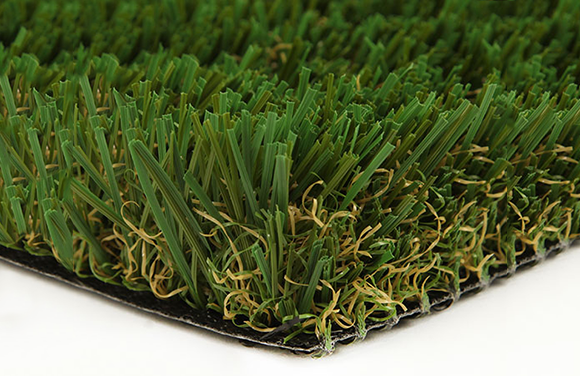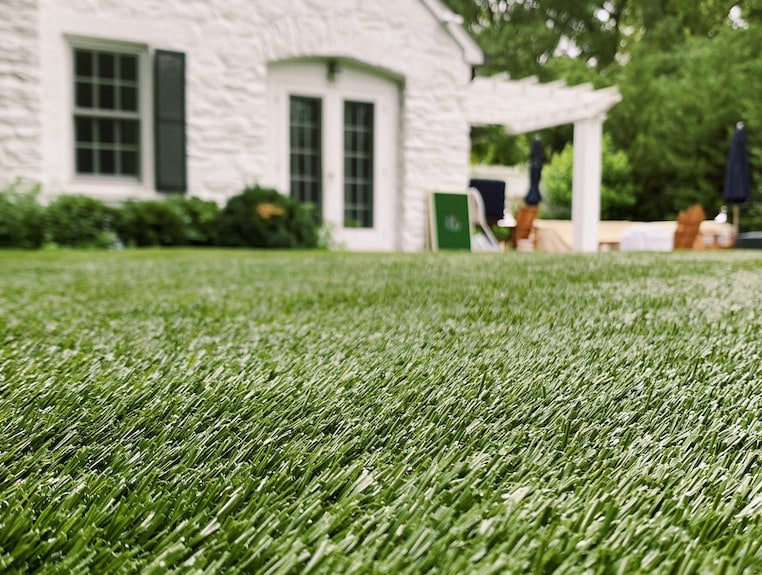Weather-Resistant Arizona Artificial Turf for Residential and Commercial Applications
Delve Into the Environmental Conveniences of Opting for Synthetic Grass Solutions
The fostering of man-made grass options offers an engaging possibility to resolve pressing environmental difficulties. By considerably reducing water use and lessening the application of hazardous chemicals, these choices not just advertise sustainable landscaping yet likewise shield regional ecosystems.
Water Preservation Advantages
One of the most considerable benefits of artificial turf is its capability to save water. Traditional turf lawns need considerable watering, specifically in locations susceptible to dry spell or water restrictions. In contrast, artificial turf does not need watering, significantly reducing the total demand for water resources. This feature is particularly helpful in deserts where water deficiency is a pushing issue.
By getting rid of the need for normal watering, synthetic grass adds to lasting landscape practices and assists alleviate the environmental influence of too much water usage. Moreover, the preservation of water includes the decrease of drainage, which can result in soil disintegration and river pollution.
Furthermore, the installment of synthetic grass permits house owners and municipalities to assign water resources much more efficiently, concentrating on crucial usages such as alcohol consumption water and farming. The change in the direction of fabricated grass not just advertises accountable water usage yet also aligns with broader ecological goals aimed at preserving natural deposits.
As communities significantly focus on sustainability, the water conservation benefits of man-made lawn provide a compelling case for its adoption in household and commercial landscape design jobs.
Minimized Chemical Usage
The shift to synthetic grass dramatically reduces the dependence on chemical therapies typically utilized in natural lawn maintenance. Traditional turf monitoring usually involves the application of pesticides, plant foods, and herbicides to advertise growth and control bugs. These chemicals can pose threats to human wellness, neighborhood wildlife, and the setting, contributing to soil and water contamination.
On the other hand, synthetic grass eliminates the demand for these dangerous materials. When mounted, it needs marginal upkeep, primarily consisting of routine cleansing and irregular infill replenishment. This decrease in chemical usage not only profits the prompt setting however additionally adds to more comprehensive environmental security. By reducing the launch of artificial substances into the environment, fabricated grass advertises much healthier dirt and water supply.
In addition, the lack of chemical runoff related to synthetic grass installments aids secure local waterways from pollution, sustaining aquatic life and keeping biodiversity. Turf installation phoenix az. As communities increasingly focus on sustainable practices, choosing artificial grass provides a feasible option that lines up with ecological conservation objectives. Via this change, building proprietors can take pleasure in lavish environment-friendly rooms without compromising eco-friendly wellness, leading the way for a much more sustainable future
Reduced Carbon Impact

Moreover, the installation of synthetic lawn can result in considerable water preservation. All-natural lawns need substantial amounts of water for watering, which not only contributes to the carbon impact related to water extraction and therapy but likewise pressures local water sources. In contrast, artificial turf requires minimal maintenance, needing no watering, thereby significantly decreasing water use and its linked power prices.
Additionally, the durability of man-made grass adds to its reduced carbon impact. With a lifespan of approximately 15 years or more, the need for regular replacements is decreased, leading to much less waste and reduced power usage in production and getting rid of typical yard choices. In general, synthetic lawn provides a lasting alternative for ecologically aware landscape design.
Habitat Preservation
Habitat preservation is a vital consideration in the debate over landscaping choices, particularly when contrasting fabricated lawn to natural turf. Natural turf yards typically require substantial upkeep, including using plant foods, herbicides, and pesticides, which can adversely influence regional ecological communities. These chemicals can seep into the soil and rivers, damaging native vegetation and fauna and disrupting neighborhood habitats.
In contrast, man-made turf presents a possibility to decrease the eco-friendly footprint of landscape design. By choosing synthetic lawn, house owners can minimize the disturbance of natural habitats connected with conventional lawn treatment practices. Synthetic grass eliminates the demand for damaging chemicals, therefore safeguarding neighboring wildlife and preserving the honesty of surrounding ecosystems. The installation of synthetic grass can lead to the conversion of previous yard areas into more biodiverse landscapes, such as pollinator gardens or native plant areas, read more which can support local wild animals.
Eventually, see this site the shift to synthetic grass not just saves water and minimizes maintenance efforts however also fosters an extra harmonious connection between human tasks and the all-natural atmosphere, promoting habitat conservation in the procedure.
Long-Term Sustainability
Long-lasting sustainability is an essential variable in reviewing the benefits of man-made turf over typical yard lawns. Among the most significant advantages of synthetic grass is its durability; it can last as much as 15-20 years with very little upkeep, whereas natural yard calls for constant reseeding and replacement. This long life decreases the need for constant sources, such as water, fertilizers, and chemicals, which are vital for preserving a healthy and balanced turf lawn.
Furthermore, synthetic grass adds to a reduction in carbon exhausts related to grass care devices. Traditional lawns often call for gas-powered mowers, leaners, and blowers, all of which add to air pollution. Arizona turf. On the other hand, man-made turf gets rid of the demand for such equipment, promoting a cleaner atmosphere
In addition, the production of synthetic lawn increasingly makes use of recycled materials, enhancing its sustainability profile. As makers adopt environment-friendly practices, the environmental footprint of synthetic grass remains to decrease.

Verdict
The adoption of synthetic grass solutions provides significant environmental advantages, including considerable water preservation, reduced reliance on unsafe chemicals, and a additional reading reduced carbon footprint. Moreover, synthetic grass aids in preserving all-natural environments by decreasing land disruption and advertising long-lasting sustainability with using resilient materials. Jointly, these aspects highlight the potential of fabricated lawn to add positively to environmental wellness and supply a sensible option to conventional landscaping methods in a progressively resource-conscious world.
In comparison, man-made turf does not require watering, significantly lowering the general need for water resources. By minimizing the launch of synthetic compounds into the environment, fabricated lawn advertises healthier dirt and water systems.
Furthermore, the installation of man-made turf can result in significant water preservation. In comparison, synthetic lawn needs very little upkeep, needing no watering, therefore considerably lowering water use and its linked energy expenses.
